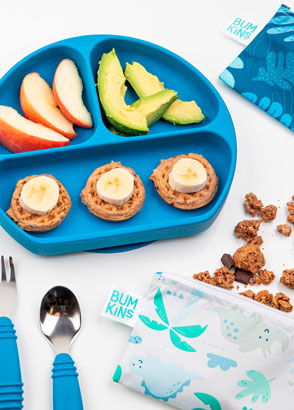From The No-Cry Discipline Solution (McGraw-Hill 2007) by Elizabeth Pantley
Children can be both excited and bored when at a restaurant. They can find it difficult to sit in one place for the length of time necessary to order, wait, eat, and pay for the meal. This problem is one that improves with age, development and practice. With a good game plan, you can help your children learn how to behave appropriately in a restaurant so that you can all enjoy the experience.
What to do:
Pick the right restaurant
Choose a restaurant based on its level of child-friendliness. What’s important? The availability of a children’s menu that includes food your kids will actually eat. The absence of a long wait for a table. Booster seats or high chairs. Private booths or eating nooks as opposed to one large open room. And a noisier, family-friendly atmosphere.
Teach restaurant manners at home
If you are casual about mealtime manners at home, don’t expect your children to miraculously develop table manners because you happen to be sitting in a restaurant. Practice good manners at home for every meal, and your children will be prepared when you eat out.
Have longer sit-down meals at home
Typically, at home we call our children to the table when all the food is ready, and then excuse them as soon as they are finished eating. If you want to practice for restaurant visits it’s a good idea to have them come to the table a few minutes earlier. Then sit and chat for a bit after you are finished with the meal. Make it fun by telling stories or jokes or talking about upcoming plans. Not only will this be great practice for eating out, it’s a wonderful ritual to introduce into your home.
Dine out at your regular meal time
When possible, stick close to your routine. Plan to dine at a reasonable time, before the kids become famished and tired. If you must go out later than your usual time, then provide your children with a snack at the normal time, and allow them to have a smaller meal at the restaurant, or to eat half the meal and bring the rest home.
Review your restaurant rules before you go
Be very specific and leave no stone unturned. A sample list of “restaurant rules” might be: Sit in your seat. Use a quiet inside voice. Use your silverware, not your fingers. Have nice conversation, no bickering. If you don’t like something, keep your comments to yourself and fill up on something else. If you have to use the restroom, ask me privately and I’ll take you.
Ask for an immediate appetizer
Many restaurants automatically bring bread or chips to the table as soon as you are seated. If this isn’t the case, ask for something to be brought out for the kids.
Prevent boredom
Bring along a few simple toys, like a deck of cards, plastic animals, or small quiet toys that can keep the kids occupied while they wait.
Mother-speak:
“We ask for to-go boxes and the check at the same time we order our food. This way, if we have to leave because of a tired or whiny child, we can make a fast get away.”
Reagan, mother to Hailey, age 2
What not to do
Don’t imagine that eating out with kids is the same as dining without them.
When you take children to a restaurant the focus is not the cuisine or the atmosphere. It’s all about controlling the excitement and boredom, teaching your children formal manners, and having quality family time.
Don’t stay too long after eating
Keep your post-meal conversation short. The longer you stay, the more likely your children will run out of patience and act up.
Don’t make them eat what they don’t like
Stick with familiar foods when possible. If the grilled cheese sandwich your child ordered turns out to be Swiss cheese on sourdough allow your child to eat the French fries and pack up the sandwich. A restaurant is not the place to battle over new and unfamiliar foods.
Don’t stay if you’re not having fun
If a child’s behavior gets out of hand, take her to the restroom or out to the car for a time out so that she can calm down. If she continues to misbehave, don’t be afraid to ask for doggie bags and leave the restaurant. But don’t give up. Review your expectations and try again.
Excerpted with permission by McGraw-Hill Publishing from The No-Cry Discipline Solution (McGraw-Hill 2007) by Elizabeth Pantley http://www.pantley.com/elizabeth
























